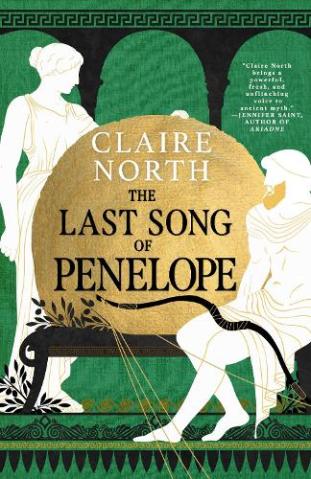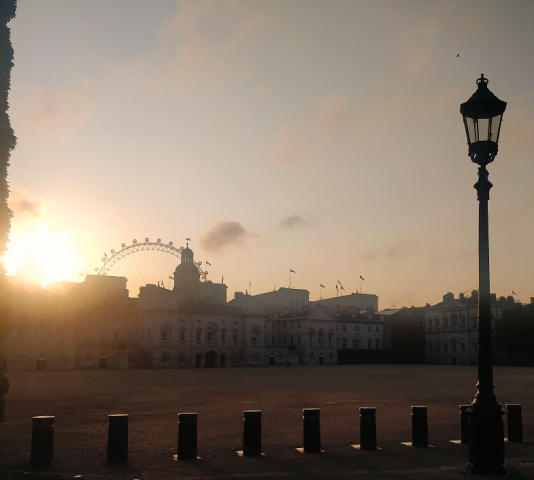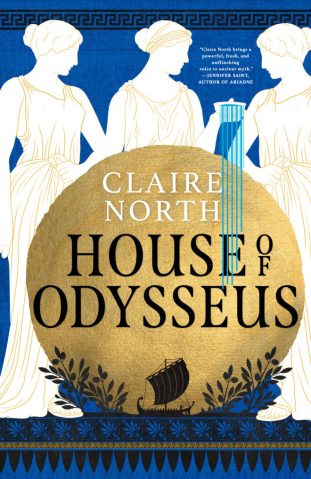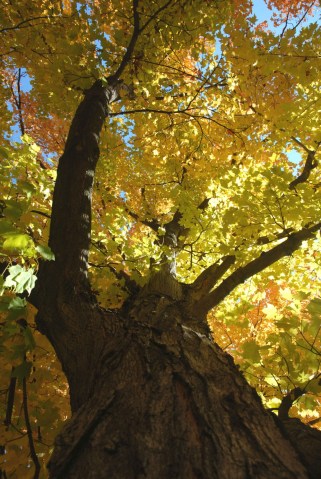Adventures in Cornwall
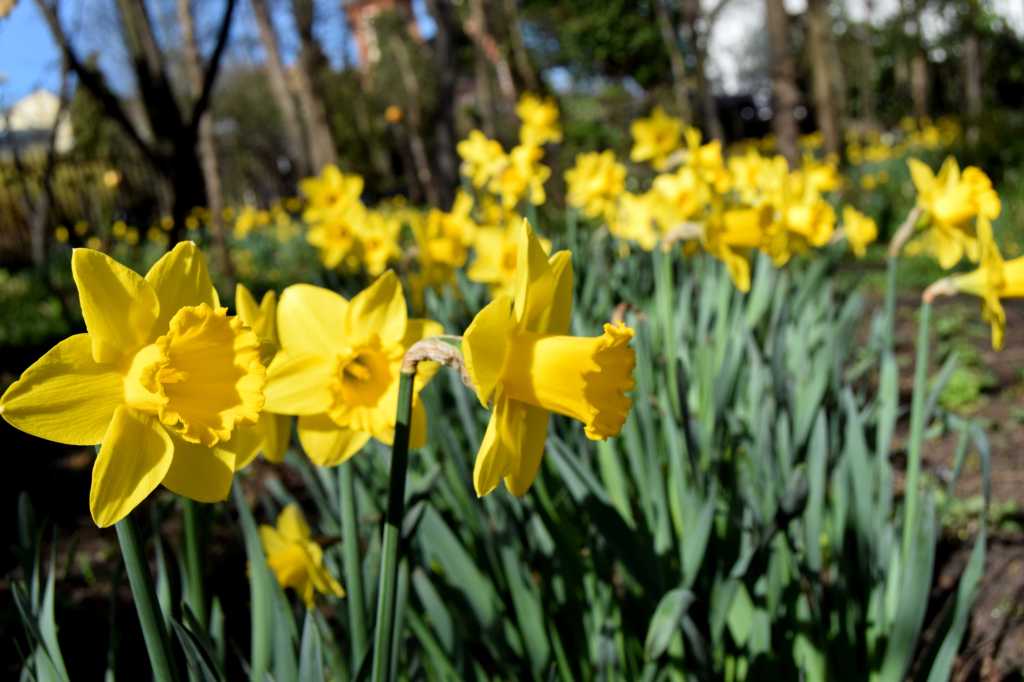
Day 0
I hate leaving the house after, say, 8 p.m.. It feels too much like going to a night shift. Things should be winding down, not winding up. But there’s a sleeper train from Paddington to Penzance bording from 22.30, and it’s way cheaper and kinda cooler to start this trip with the overnight train than a day train + hotel stay. So off I go!
Paddington as the last trains come and go is a little eerie. It’s suddenly much bigger without all the people, and much too quiet. In a waiting area next to the platform, people sit around and occassionally eat a free apple. The majority of travellers on this Monday evening are retirees, practically dressed, travelling in groups of three or four. There’s a couple of younger backpackers, and very few solo travellers.
On the train, I have a berth to myself. To fit the cabins in, you have to almost turn sideways to squeeze down the corridor, but the bed itself is comfy and the cabin itself feels remarkably nice. (My first encounters with sleeper trains were the 6-berth jobs run by SNCF in France, packed with bricks with a pillow made of boules.) A disconcertingly smiling ‘hostess’ goes from door to door to get our breakfast orders and remind us that they’ll be waking us at 6.50 a.m. whether we like it or not.
We jerk away from the platform just as I’m settling down to sleep. It takes a while to doze off. Just at the moment of truth, we reach what I’m guessing is Reading, where two giddy, semi-hysterical women board and spend twenty minutes standing in the corridor exclaiming in delight at how much like a hotel this whole thing is. It’s 00.30; no one else is as enthused right now as they are.
Day 1.
At 6.45 I open the blind to the railway compartment and am smacked full in the fact by golden light. A living landscape of deep, deep green rolls by, crowned with viaducts and pitted with hidden streams and rivers. Breakfast is ketchup with a dash of bacon. I’ve had far worse.
Penzance. In my mind I’d imagined it as a sort of regional hub, and in many ways it is, but that doesn’t change the fact that it’s tiny. The sky is grey and the streets are still. A man coming out of a door greets the binman by name, and they chat local gossip. Art and antique shops line the street down from the church. One has a full-sized Dalek in the window, with the disappointing notice hung round it’s laser: Not For Sale. I have forgotten my toothbrush. In 9 years of travelling as a technician, I can remember a) my toothpaste b) my electric toothbrush head or c) my electric toothbrush body, but never all three. I find a Co-op and get a £1 tootbrush, some ‘rib-eye’ flavour dried meat (didn’t know it was a flavour, but hey) and a box of dried fruit things that turn out to be the saviour of the trip. And cash; I am suspicious of trying to wing this entire thing on debit card.
I’m due at my first stop – Porthleven – that evening. It’s not yet 9 a.m. and I’m not in a tearing hurry, so I find one of the few open cafes and settle in for a hot chocolate. The high street is filled with competing pasty shops. This one is the oldest in the world; this one the best; this one has won the most prizes; this one is the most traditional; this one is run by a family; this one is world-famous. In the cafe, the very pleasant owner greets me and immediately gets chatting about where I’ve come from, where I’m going, what to look out for (“Helston Flora Day – you have to go!”) and so on. As a Londoner it’s disconcerting, but as a stranger it’s very nice. Then a colleague joins him, and they start exchanging local gossip.
“I’m not saying it’s wrong that he’s homosexual, it’s just that you don’t want to be associated with that, do you?”
My heart sinks. I know this isn’t indicative of what to expect and a cruel and unusual first introduction to Penzance, but it’s still a shame.
I start walking. My plan is to follow the South West Coast Path from Penzance, all the way round the Lizard, to Falmouth in time for a Friday afternoon train home. In London I can walk twenty miles without feeling any ill-effects; in the countryside I can amble up and down hills without any problem at all. This however is my first prolonged walking holiday, solo, with a rucksack on my back. The weather is predicted to be ‘changable’ which is hardly news. I have a notion I might read Walden by Thoreau and discover vital Philosophical Life Truths, but that’s quickly dispelled as being wanky gobshite.
The path from Penzance to Marazion is paved, easy, wee bit dull courtesy of the train track to its left. The wind off the sea blasts a line of sand into my face, which I hide as best I can behind hood, scarf and glasses. Outside Penzance, a man is shadow-boxing in between squats and running up and down with his two gleeful dogs. As I near Marazion, behold: St. Michael’s Mount. There’s something inherently sexy about an island you can walk to at low tide across a hidden causeway. I arrive just as the tide is getting low enough to allow people over to the former monastery/former fort on its stub of black and green stone. A few years ago I went to its French counterpart, Mont St. Michael, and it’s not wrong to say that yeah, as with most things of a certain period, the English keep on looking like they copied the French on a slightly smaller, somewhat more grey scale. It’s still pretty awesome; but you can’t escape the comparison.
My feet are uncomfortable. Two things become apparent. Firstly, my ol’ reliable socks of ol’ reliability have been so reliable for so long that now they’re in my actual walking boots, they’re starting to give. Hasty re-allocation of socks ensues, as well as the pre-emptive purchase of blister plasters. Secondly, my ol’ reliable walking boots I’ve had since I was 16 years old, are suffering the same malady. Well crap. Not much to be done about it now.
I keep going.
A little after Marazion, the path is closed. A cliff has collapsed. As I stand at the ‘no entry’ sign, trying to find an alternative route, a woman and her granddaughter march up to me.
“Huh, funny how many people are still using the path even though it’s closed!” exclaims the older lady, before marching straight down it at a gleeful, confident pace.
“She’s been using the path for years,” admits her granddaughter. “Can’t stop her now.”
Figuring that here is some local knowledge best not argued with, I follow.
“Gran, slow down!” whimpers the younger of the pair. “You’ll get the lady killed pace you’re going at! You’re 84!”
“I’m 48!” she retorts. “Always have been, keep up!”
About to be out-paced by a woman at least 15 years older than me, I scamper to keep up as she marches down a narrow path between hedgerows and gorse onto a rubble-strewn beach.
“Such a shame,” she sighs, looking at the black boulders strewn from cliff edge to sea. “We used to come down here, not last year, to have picnics and for the youngsters to do their thing. Now look at it. Where are you going?”
“Porthleven.”
“Ah, well, that way, keep going, can’t miss it! Good luck!”
I am dismissed with a wave of her walking stick and, grateful, I scurry on.
From here the path starts to get harder. It narrows to little more than a 20cm gap sliced between gorse and mud. Occasionally it breaks out into cliff-top vistas across a raging, pounding sea of white foam and rumbling depths, and you can look back to see a sweep of grey coast bending away towards the horizon.
Then it slices downhill again; then up, getting ever more bumpy as it goes. The guide said that ‘sure-footedness’ was required. This is an understatement. I suddenly yearn for walking sticks. The recklessness of my assumptions – that this would be a fairly simple bit of coastal walking – is becoming apparent.
After a few hours on the road, I pause to sit and eat dried fruits (blessed dried fruit!) and finish a bottle of water. My bag, though full, is perfectly comfortable. The temperature is changing every ten minutes, from hot in the sun to freezing cold in the wind. On those occassions I open my coat, a very un-lady-like smell rolls out. I think I must be half way. An hour and a half later I actually bother to check the map, and discover I’m significantly less. The realization settles in that this whole trip could be less of a gentle amble and more of a physical challenge.
As I near Porthleven, the rain starts. It is a heavy tap-tap on my hood. The whole landscape smells of spring, of life. Everywhere you look, bluebells are in their final flush of growth, thousands upon thousands of them, hillsides baked in purple, while out of the hedgerows erupt buds of white and purple, fuschia and brilliant yellow. The buttercups are almost flourescent in their intensity; the grass is knee-high and everywhere there is life. The rain even subdues the insects for a few miles, but now the path, which was in places already little more than stubs of rock sticking out of a steep incline, grows slippery. I made the last mile into Porthleven like a little old lady, shuffling one sideways step at a time down the hill.
Porthleven stands out on my map as a definite cite of civilization. Arriving at my AirBnB, my lovely host immediately informs me that Porthleven is a foodie town, but if I wanted to appreciate its wonders I should have reserved a table in advance. I’m totally fine with fish and chips. Like many of the homes I’ve seen while ambling, she’s fitted her roof out with solar water heaters and panels, which she is delighted by. “Have a hot shower!” she exclaims. “It’s free!”
On the radio, another political disaster is announced and she cackles with glee at the discomfort of our leaders. Her dog is very old; probably in the final few weeks or days of dying. She apologises for his smell, for his weak bladder and bowels. I really don’t care: her love for this ancient, beautiful creature is way more important than basically anything else, to be honest.
In my room, I strip off boots, change out of wet, muddy clothes, and stick my legs up the wall. The feeling of fluid flowing out of my feet is bizarre and wonderful. I fall asleep with the suspicion that I may have bitten off more than I can chew.
Day 2
“The path to the Lizard is much harder,” explained my host, as I packed up in the morning. “But you should go to Helston Flora Day! Except the buses aren’t running in Helston, so you might not be able to get back out.”
I toy with taking her advice, but no. Catching a bus at all in this early stage feels like failure, and besides, the fare is £13 which is flipping outrageous. I know I’m a poncy London urban middle class liberal, but if you want someone to sign up to the conviction that we need to spend more money on rural community services then mate, I’m right there with you.
Thankfully, the path is significantly easier. The hedgerows and thorns of yesterday give way to long, rolling coves and gentler, bare hills. The wind comes in sideways heavy with salt, and beneath the sheer drops to my right the spray from the sea claws towards the top off the cliff.
One bit of advice I do take from my host is to stop at the Chocolate Factory en route, for – well, a jacket potato actually, but don’t get me wrong, the chocolate part was very tempting too. Refuelled I start playing tag with another walker along the path who I think I’d cottoned the day before. He moves at a much slower pace than I do, but I stop regularly to stare at the view or just sit on a bench and think about life, so for about 4 miles we pass each other in successive turns.
At the Marconi Museum, an incredibly cool reminder of the scientific history of the area, I start hearing helicopters. There’s an airfield inland, and the RAF are busy practicing with what look like some sort of attack helicopters, as well as a couple of fighter jets. For a long stretch of ambling past thick ferns and muddy bridal paths, the only sight of humanity I see are these passing vehicles.
My legs feel ok, but I stop in a cove of black stone and rushing foam where an inland stream meets the ocean, just as the sun comes out to the west. The sunlight is golden, picking out oranges and reds in the rock off the cliffs, making the grass almost seem to glow with springtime vitality, even as the sky overhead remains black and ominous. The effect is so hypnotizing that I almost get stuck in the cove by high tide, having not paid close enough attention to the rising waters that threatened to cut off the path. Thankfully, a nearly-close encounter later, I make it out onto the path and towards the Lizard.
The Lizard is the southern most point in England, and in a strange way, it’s desolate. For miles around there’s nothing but heathland and sea. The low white houses squat, deceptively near, in a flatness of nothing. At its southern most tip is a lighthouse, from which the fog horn blares out to the waiting grey. Everything was shut except the pub by the time I arrived, but beneath the lighthouse was a youth hostel in a beautiful 1860s building of tile and fading paint. I got lucky – I was the only person in my dorm that night – and as the sun set I sat in a garden filled with rabbits and watched the light. In the dark, the beam from the lighthouse cut a regular line across the night from my bedroom window, and I was asleep within minutes of hitting the pillow.
Day 3
For sheer beauty, the walk from the Lizard to St. Keverne was probably the most stunning. That may have been because the sun finally, finally properly came out and stayed out, giving one half of my face a definite freckled tan, while the other, hidden by the angles I was walking, remained grey. The signage along the South West Path is… in places dubious, shall we say… so after an unwelcome diversion inland that I could almost certainly have avoided, I hit the cliff path properly.
On the east side of the peninsular, the freezing wind off the sea died all the way down. Instead Cornwall’s other fragrant aroma – cow dung – made itself known. Not gonna lie: you don’t get many cows on Dalston Kingsland, so I was initially a bit befuddled by the way herds of cows can just look up, as one, death-stare you, then follow you in a mass as you walk beside their field in a way which I’m assured is friendly, but to a girl from Hackney is definitely a bit weird.
However the landscape itself was stunning. Every fifteen minutes seemed to require another stop just to take in the different blues of the sea, the fields of purple and white, the ferns with fresh uncurling leaves popping from old stone walls, the walls of young flowers and vistas of grainy stone sand.
In a cove of sand I stopped for a fairly decent ice cream and watched a gaggle of young men trying to surf. In Coverack I made it just in time to be grudgingly served a bowl of soup from a cafe that closed at ‘5-ish’ – because most things it turn out close at 5-ish, and the kitchens close considerably earlier than that.
Then it was time to try cutting inland, to my accomodation for the night at St. Keverne. The inland paths of Cornwall fall into two categories. Either a) incredibly beautiful paths where you can still see the old stones laid beneath the mud, framed with woven bowers of tree and leaf or b) unmarked ghost-paths surrounded by cows that the farmer doesn’t particularly want you to go through with an entrance marked only by thorns. My route forced me to encounter both, and by the time I reached St. Keverne I was flipping knackered.
Key lessons learned: if the public footpath on your map has a sign at its beginning saying it’s been maintaned by the National Trust, then it’s a good’un. God bless the National Trust. Lord preserve it and its blessed, clearly marked out signpostings through pristine valleys of gently trickling streams. If, however, the public footpath requires you to cross a field turned into a bog by grazing cattle and you can’t see a sty at the other end – maybe stick to the road.
Other key lesson: as a map-reader, I am prone to confirmation bias. If I want to believe that this valley is the one I’m in, I will absolutely look for evidence to confirm this hypothesis, whether it’s true or no. I got better at not doing that as the days rolled by, but still. Many was the disappointing moment I realised I had another hill yet to climb.
My accomodation was billed as a B&B. When I arrived, it was a house. An empty house. I had been given instructions to collect the key from a key safe, which I did, and then been given wrong instructions as to which room I was in. I had no idea if the owner was going to return, so didn’t know whether to put the chain on the door. There were used towels in the bathroom, but other than that no sign of life in this pristine, blue property in the middle of no where. My booking said I got breakfast as part of the deal, but in the morning there were still no humans, no bread in the bin, half a pint of milk and a box of crunchy nut. I ate what little I could, and went on my way after a very disquieting night.
Day 4
Perhaps because of the disquieting night and the lack of more than a scavenged, half-hearted breakfast, my legs started tired. More tired than they’d been on any of the previous mornings. I also had a train to catch that afternoon from Falmouth, some five and a half hours walking away, so set out paranoid early to give myself time to make it without having to push a killer pace. I went overland towards Helford, where a ferry service runs to take you across the river, taking any rural paths that looked trustworthy and avoiding those that looked like a bear trap. Even the roads were beautiful; a rolling landscape of hills and trees, old mills and bursting flowers. The only people I met were the occasional dog-walkers, until I came to Helford itself. There I discovered that not only had I not had a proper breakfast despite paying for one, but I’d lost my sunglasses and the ferry had put its fare up by a quid. This was roughly the moment I hit my wall. My legs were exhausted, my feet were a series of blisters, my back was finally starting to ache a bit from the bag and I was ready to pay, yay, £13 for the bus. And the local shop didn’t have any goddamn pasties.
On the other side of the river, I crawled up the hill to wait at the bus stop for the 35 to Falmouth. It was due in ten minutes, and as I waited I took off my hiking boots and switched to the much lighter pair of shoes I’d been carrying for evening ambles/a bit of a break. Looking at my map, the next stop on the bus route – Mawnan Smith – looked to be only a mile away. I could make it a mile. I had time in hand, and the odds seemed reasonable that I might be able to get some food in Mawnan Smith. Go on. Why not? I could do it.
I got back onto my feet.
Started walking.
Almost burst into a run. I’ve never quite hit a physical wall in the same way I hit a wall that day, and I’ve definitely never pushed through one before, and it was… almost euphoric. I made it to Mawnan Smith in twenty minutes, and having checked the map before when I saw the sign for what looked like a decent footpath heading east I thought… yeah! Yeah, I can do this! I just did a mile in twenty minutes and it was fine, I can do this!
So I turned and followed the path, back towards the coast. By the time I reached Maenporth there was no question about what was going to happen: I was going to walk to Falmouth. No buses. No goddamn buses!
And moreover, at Maenporth there was food. There was actually a choice between posh food and beach food, and after a brief mull I went for the beach cafe and had probably the single greatest cheeseburger of my life. I mean, no, the single greatest cheeseburger I’ve ever had was almost certainly in Kansas – but emotionally, at that time, it was pretty great. I also fell into chatting with a couple of walkers who’d done far more of the path than I had (hello!) and generally, as the sea washed into the cove, felt pretty goddamn great about the universe.
The last few miles to Falmouth were perhaps the easiest I’d ever done. My feet hurt and my legs were tired, and I could have skipped into town. As the path filled with more dog walkers and ambling students enjoying the bright, warming sun, home suddenly seemed very near and very real. I stopped off for a scone (and discovered to my horror that they charged for clotted cream separately, thus ruining the point of Cornwall) and paddled in the freezing water of the sea as it lapped in. With time to spare, I shambled up the hill to Falmouth Station. It’s a one-platform, one-track town, but that doesn’t stop the announcer still politely declaring that the “next train at Platform 1 is to Truro” as though there were any other platform for it to be at.
The light on the way home was beautiful. Wet air made the thick yellows of the afternoon diffuse and disperse into a glaze of illumination. Everything seemed to be full of life, pushing upwards. I smelt very bad, had realised that I’m not as good at walking places as I thought, and had been far too busy trudging on to have any philosophical encounters with truth or nature or stuff. It was pretty much perfect.

